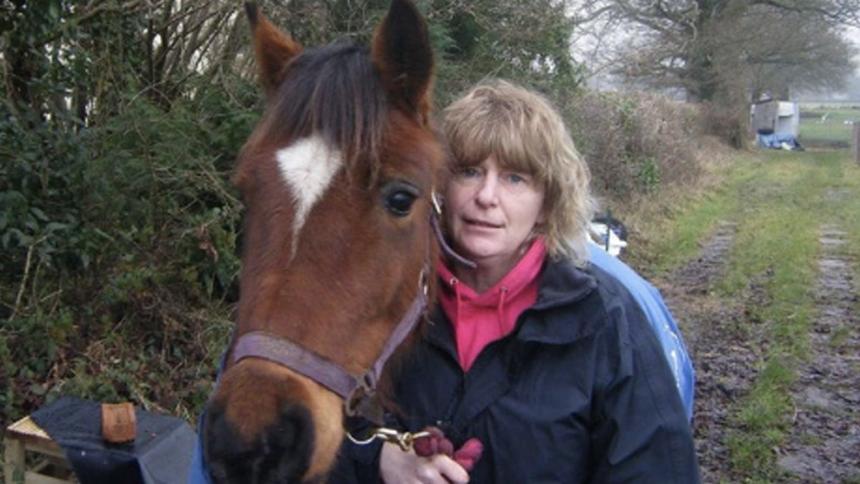
Southampton: Crime Profile
Hard-hitting true crime series Murdertown provides a complete analysis of dreadful crimes that have taken place in communities across the UK. Host Anita Rani travels to a different location in each episode, chronicling case after case with the help of police officers, journalists and the people who had to deal with the emotional fallout of the killings.
Just outside Southampton, she focuses on the murder of Pennie Davis, a 47-year-old mother of five who was stabbed to death while tending to her horses one September day in 2014. The discovery of her body in such placid surroundings was a shock, but the full details of the case, and the bizarre conspiracy that culminated in her killing, would prove to be more shocking still.
Murdered while walking home
The sad death of Pennie Davis is far from the only murder to have blighted this part of England. In March 2003, almost two decades before the murder of Sarah Everard would become a seismic cultural moment, a teenage girl in Southampton was killed in grimly similar circumstances. She was Hannah Foster, a 17-year-old A-level student who was walking home from a night out with friends when she was snatched from the street, driven to an isolated spot, raped and murdered.
While in her assailant’s vehicle, Hannah managed to dial 999, but as she wasn’t able to speak, the call was automatically disconnected. Some sounds were recorded however – Hannah could be heard pleading with a man with a south Asian accent. A breakthrough came when analysis of texts made to Hannah’s phone allowed detectives to track where it had travelled in the early hours of that night, from Southampton to Portsmouth. When a Crimewatch appeal was made late that month, the supervisor at a sandwich company noted that one of his delivery drivers – Maninder Pal Singh Kohli – had a route that matched that taken by Hannah’s killer, and had acted out of character the next day.
Maninder Pal Singh Kohli, a married father in his late 30s, was indeed the culprit. The trouble was, he had fled the UK in a panic just a few days after the murder, settling down to a new life in India. More than a year later, Hannah’s parents went to India to raise public awareness of the killer in their midst, triggering a media sensation in the country. Kohli was eventually tracked down and arrested, and initially admitted to the rape and murder.
He later retracted the confession, however, and it would be years before he was extradited to face justice in the UK. During his 2008 trial, he concocted an outrageous explanation. Kohli claimed he’d owed money to his supervisor, who – angry about the debt not being paid – arranged for Kohli to be abducted and forced to rape Hannah. The story drew gasps of disbelief in court and was dismissed by the jury. The now 41-year-old Kohli was sent down for life.
A monstrous miscarriage of justice
One December evening in 1979, a young woman named Teresa De Simone finished her shift at a Southampton pub and went out clubbing with a friend. The night would culminate in her murder, and lead to one of the worst miscarriages of justice in British legal history.
On leaving the club in the early hours, the 22-year-old and her friend drove back to the car park of the pub where she’d been working. Here, they sat chatting in her friend’s car before Teresa said goodnight and walked over to her vehicle. In the moments after her friend drove away, Teresa was attacked. The next morning, her half-naked body was found in the back seat of the car – she had been raped and strangled.
Tens of thousands of people were interviewed in the ensuing months, with hundreds of suspects identified. Focus eventually fell on Sean Hodgson, a troubled young man in his late 20s who’d previously been arrested for minor offences. While serving a relatively short sentence, Hodgson approached a priest and told him that he was haunted by the face of a woman he’d killed in Southampton. He put his thoughts down on paper, writing 'I did the murder, why I don’t know. So all I can say is let justice be done.'
Police visited Hodgson in prison, where he made a long and detailed confession. In a letter he later wrote for the investigating officers, he was forthright about his guilt, saying: 'Nobody in their right mind would hold their hands up to murder as I have done with the thought of a life sentence, but I did because I did it.'
Indeed, Hodgson seemed to know things about the crime that hadn’t been released to the media – including details of injuries inflicted on the victim, and the way her body had been left in the car. However, Hodgson changed his story in court. Describing himself as a 'pathological liar', he categorically stated 'I did not kill Teresa De Simone', and recalled that ‘on many occasions, I have made false confessions to crimes I have not committed.'
His confession, and the fact that he seemed to know exact details of the case, led the jury to return a guilty verdict. 'I have no doubt whatsoever that you were guilty of this appalling, horrible crime of killing that girl,' the judge said.
Although Hodgson’s barristers argued that his apparent 'insider' knowledge of the crime was actually down to information he’d overheard from police officers and 'intelligent guesswork', he was not given the chance to appeal the conviction. The turning point would come many years later, in 2008, when lawyers acting for Hodgson managed to uncover DNA swabs taken from the crime scene. It was found that the DNA could not have come from Hodgson, and in 2009 he was finally freed having spent 27 years behind bars.
It wasn’t until 2011 that the real murderer was named by police as David Lace, a known criminal who was just 17 at the time of Teresa’s killing. Lace had confessed to the murder in 1983 after being arrested for burglary and wasn’t taken seriously as his story lacked the precise details provided by Hodgson. Lace took his own life in 1988, but DNA analysis on his exhumed body proved to be a match with the swab evidence. In reaction to the news, Teresa’s mother said, 'He must have been very troubled. We will never know why he did it.'








